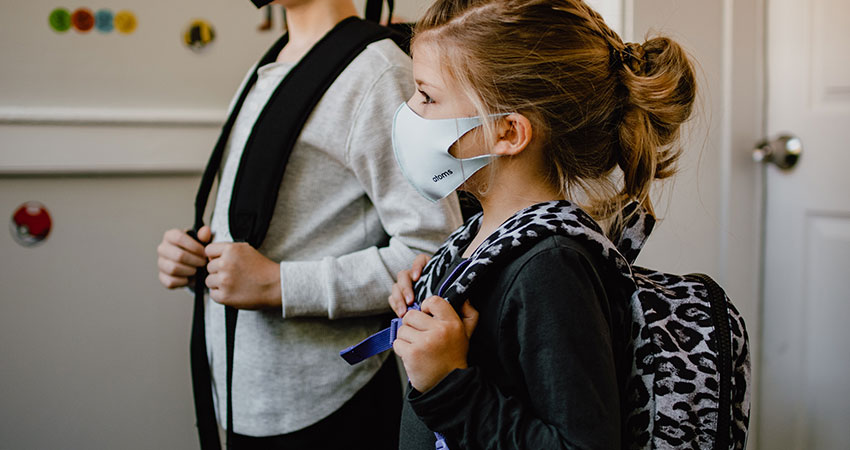Photo by Kelly Sikkema on Unsplash
While record spending is anticipated for back-to-school season this year, consumers may experience shortages in certain areas due to high demand, reduced inventories and ongoing pandemic-related supply chain and distribution issues, as well as fewer discounts.
According to research from Toluna, the 50% of Americans doing back-to-school shopping in the month prior to classes starting will have difficulty finding everything they’re looking for. Nearly a third of consumers began shopping at the beginning of the summer, Toluna said.
Based on Toluna’s survey of 1,000 U.S. consumers, items in highest demand, i.e., those that respondents said they planned to spend more on this year, include cleaning supplies (cited by 63% of respondents), new food items/snacks (61%), sanitizer (61%), clothes (59%) and general school supplies (56%).
Laura Ritchey, COO of outsourced logistics provider Radial, said not only have back-to-school inventories been challenged from ongoing inbound issues (Asia, west coast ports, inland transportation, etc.), but forecasting based on the recent past has been difficult.
“Forecasts typically rely on historical trends, but right now obviously you can’t use last year, and 2019 is not necessarily predictive, so children haven’t acquired back-to-school clothing for two seasons,” Ritchey said. “It’s causing the peak to be bigger, with more demand than expected. And with some schools starting now or soon, parents are on edge in terms of getting goods in time.”
An annual study from the National Retail Federation and Prosper Insights & Analytics predicted total back-to-school spending will reach a record $37.1 billion, up 6.4% or $33.9 billion last year. Families with children in elementary through high school plan to spend an average of $849 on school items, an increase of 7.5% or $59, while college students and their families are looking to lay out average of $1,200, up 13.5% or $141 from 2020.
“The pandemic forced parents and their school-aged children to quickly adapt to virtual learning, and they did it with an incredible amount of resolve and flexibility,” said NRF President and CEO Matthew Shay. “We enter the new school year with plans to return to the classroom and retailers are prepared to help Americans find and purchase whatever they need to make this transition as seamless as possible.”
While price is always a consideration for back-to-school shoppers, another key for them, as in other retail categories, is having a personal brand connection. According to a recent survey from Redpoint Global, 70% of consumers said they planned to shop exclusively with brands that understood them.
“Think of that: They didn’t mention price or availability, just a personal connection,” said John Nash, Chief Marketing and Strategy Officer for Redpoint Global. “Establishing this kind of connection, however, requires an understanding that a personalized, relevant and increasingly digital experience requiring a trust that your customer data is in the right place. Getting there takes a focus on customer experience, a holistic handle on all data and a single customer view that encourages re-engagement.”
The related concept of brand trust is also a big deal for back-to-school shopping in 2021. Profitero found that the terms “Jansport,” “Under Armor backpack” and “Nike backpack” saw major upticks in Amazon search rank in the end of July vs. 2020, up 556%, 250% and 58%, respectively. Not surprisingly, Amazon was the low price leader, Profitero found, averaging 18% cheaper for school supplies/essential and 8% cheaper for school tech.
The combination of supply chain bottlenecks and shortfalls, plus price inflation due to high demand, is pushing more shoppers to seek out refurbished and resale items, said Sender Shamiss, CEO of goTRG.
“There is a huge demand for computers, tablets and apparel,” Shamiss said. “People either can’t find what they need brand new or are hoping to get it for less. The reality is that these items are so hard to come by that they’re fetching new value in the secondary markets.”
Parents are also increasingly looking to ratings and reviews when considering back-to-school purchases, according to Oracle Retail. Based on a survey of 5,000 global consumers, parents are nearly 3x more likely to be “very influenced” by a negative review and generally to trust reviewers. Also, they are 4x as likely to leave a bad review than shoppers without kids, Oracle Retail found.
Given the supply chain and delivery issues, tracking communication and transparency is paramount among back-to-school shoppers. In the Oracle Retail survey, 82% of parents said granular tracking and status information – such as real-time updates from order to delivery – is essential, compared to 66% of non-parent shoppers.
The buy now, pay later (BNPL) phenomenon has been growing rapidly, especially among younger consumers without more established credit, and many companies have emerged to address this need and allow retailers to offer flexible payment plans. This year’s back-to-school season is no exception, according to Dan Wallace-Brewster, SVP of Marketing at Scalefast. While BNPL carries risks for both consumers (debt) and some retailers (transaction costs and margin), it can work well for some heftier school purchases.
“This year, many students will be adapting to a hybrid schedule of classroom and home, and parents will again need to make new consumer electronics purchases,” Wallace-Brewster said. “Brands and retailers that want to scoop up this market should offer more flexible payment arrangements, giving buyers options that work within their budget.”

